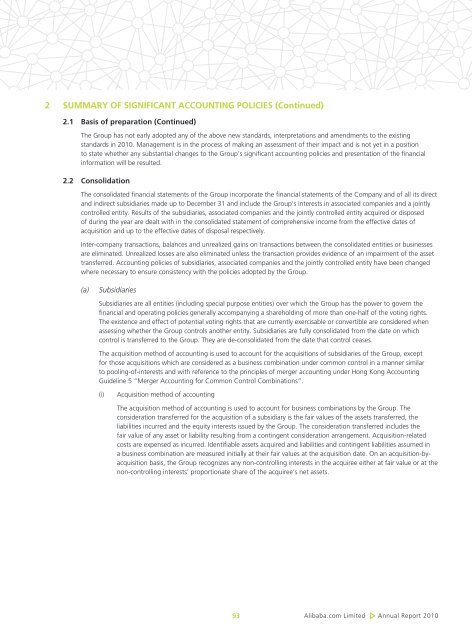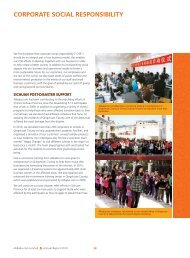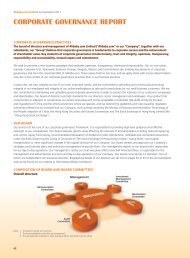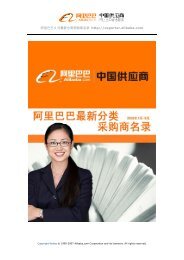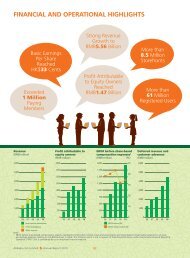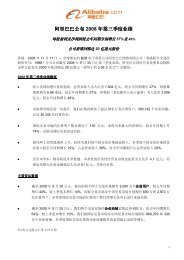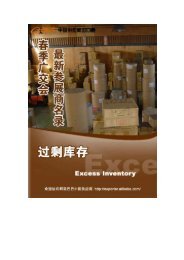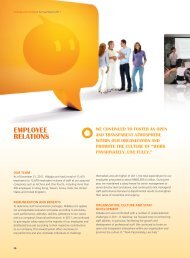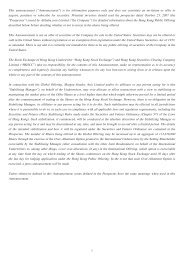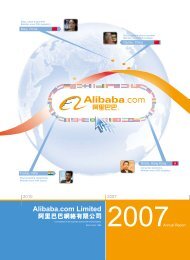You also want an ePaper? Increase the reach of your titles
YUMPU automatically turns print PDFs into web optimized ePapers that Google loves.
2 SUMMARY OF SIGNIFICANT ACCOUNTING POLICIES (Continued)<br />
2.1 Basis of preparation (Continued)<br />
The Group has not early adopted any of the above new standards, interpretations and amendments to the existing<br />
standards in 2010. Management is in the process of making an assessment of their impact and is not yet in a position<br />
to state whether any substantial changes to the Group’s significant accounting policies and presentation of the financial<br />
information will be resulted.<br />
2.2 Consolidation<br />
The consolidated financial statements of the Group incorporate the financial statements of the Company and of all its direct<br />
and indirect subsidiaries made up to December 31 and include the Group’s interests in associated companies and a jointly<br />
controlled entity. Results of the subsidiaries, associated companies and the jointly controlled entity acquired or disposed<br />
of during the year are dealt with in the consolidated statement of comprehensive income from the effective dates of<br />
acquisition and up to the effective dates of disposal respectively.<br />
Inter-company transactions, balances and unrealized gains on transactions between the consolidated entities or businesses<br />
are eliminated. Unrealized losses are also eliminated unless the transaction provides evidence of an impairment of the asset<br />
transferred. Accounting policies of subsidiaries, associated companies and the jointly controlled entity have been changed<br />
where necessary to ensure consistency with the policies adopted by the Group.<br />
(a) Subsidiaries<br />
Subsidiaries are all entities (including special purpose entities) over which the Group has the power to govern the<br />
financial and operating policies generally accompanying a shareholding of more than one-half of the voting rights.<br />
The existence and effect of potential voting rights that are currently exercisable or convertible are considered when<br />
assessing whether the Group controls another entity. Subsidiaries are fully consolidated from the date on which<br />
control is transferred to the Group. They are de-consolidated from the date that control ceases.<br />
The acquisition method of accounting is used to account for the acquisitions of subsidiaries of the Group, except<br />
for those acquisitions which are considered as a business combination under common control in a manner similar<br />
to pooling-of-interests and with reference to the principles of merger accounting under Hong Kong Accounting<br />
Guideline 5 “Merger Accounting for Common Control Combinations”.<br />
(i) Acquisition method of accounting<br />
The acquisition method of accounting is used to account for business combinations by the Group. The<br />
consideration transferred for the acquisition of a subsidiary is the fair values of the assets transferred, the<br />
liabilities incurred and the equity interests issued by the Group. The consideration transferred includes the<br />
fair value of any asset or liability resulting from a contingent consideration arrangement. Acquisition-related<br />
costs are expensed as incurred. Identifiable assets acquired and liabilities and contingent liabilities assumed in<br />
a business combination are measured initially at their fair values at the acquisition date. On an acquisition-byacquisition<br />
basis, the Group recognizes any non-controlling interests in the acquiree either at fair value or at the<br />
non-controlling interests’ proportionate share of the acquiree’s net assets.<br />
93<br />
<strong>Alibaba</strong>.com Limited Annual <strong>Report</strong> 2010


